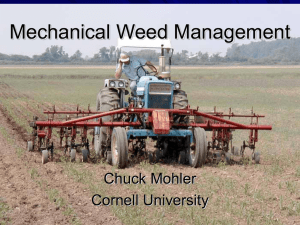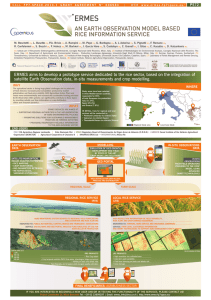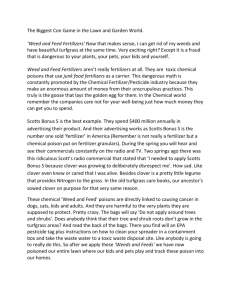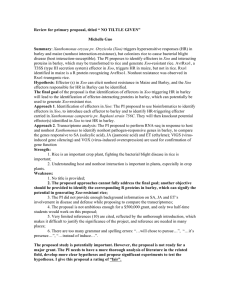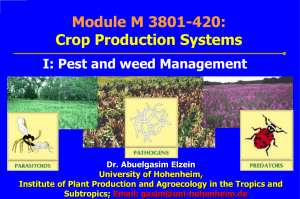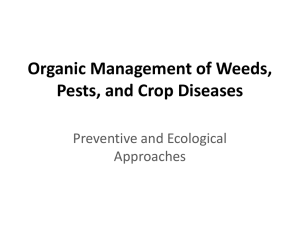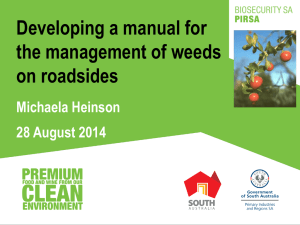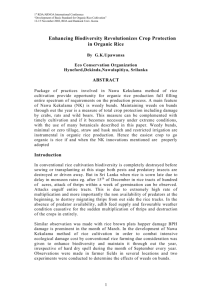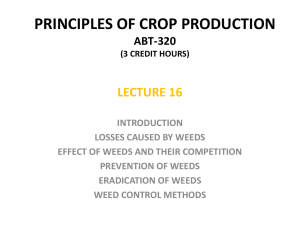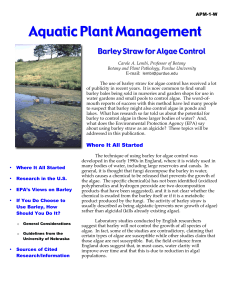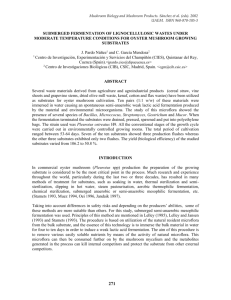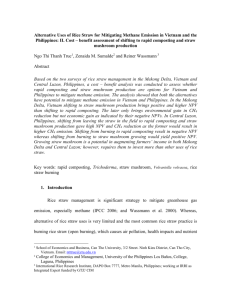No-Till methods of Food Production
advertisement
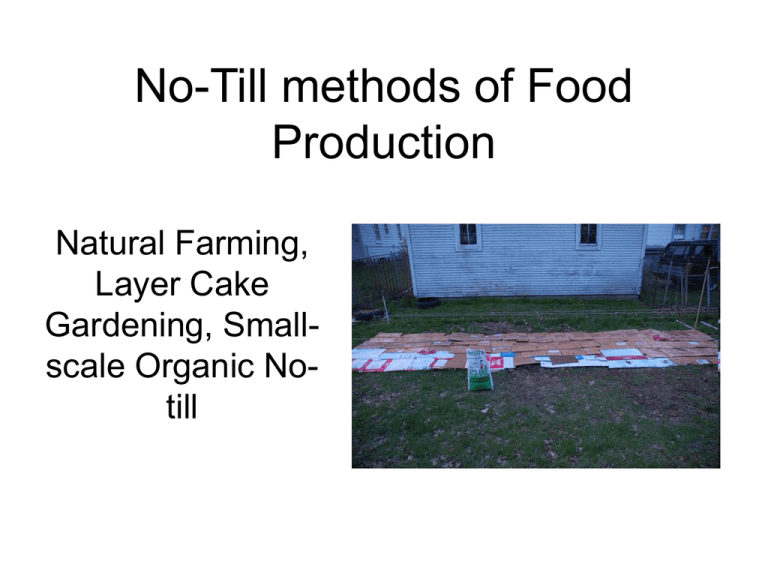
No-Till methods of Food Production Natural Farming, Layer Cake Gardening, Smallscale Organic Notill Masanobu Fukuoka • Lived 1913-2008 in Japan • Trained in Plant Pathology • Wanted to Farm in a way that mimicked nature • Author of The One Straw Revolution, The Natural Way of Farming, and The Road Back to Nature 4 Principles of Natural Farming • • • • No Cultivation No Fertilizer No Weeding No Pesticides Rice/Barley Succession • Rice grown May-October • Barley Grown October-May • Done without Tilling, flooding of fields, and fertilizers • Matched or exceeded yields of highly mechanized neighbors • Did not ask “what more can I do?”, but instead “what can I not do?” Rice/Barley Succession 1. 2. 3. 4. 5. 6. Barley broadcast a couple of weeks before Rice harvest with White Clover (nitrogen source) Rice Harvested, and straw spread back on field Thin layer of chicken manure (nitrogen source) spread to help decompose straw (carbon source) In December, rice for following year broadcast in clay pellets Barley harvested in May and straw spread on emerging rice seedlings and clover Thin layer of chicken manure (nitrogen source) spread to help decompose straw (carbon source) Fukuoka’s vegetable experiments • Broadcast vegetable seeds in his citrus orchard next to the trees amidst clover • Planted spring plants as winter weeds began to die, and fall plants as summer weeds began to die – His vegetables outcompeted weeds if planted with cover crop • Every season, he let a certain percentage of plants go to seed • Plants in the same species crosspollinated with each other – Vegetables “re-wilded” themselves Advantages/Disadvantages • Advantages – Method teaches us to think outside the box – Emphasis on observing environment and mimicking natural systems – Less work – Straw recycles nutrients and suppresses weeds • Disadvantages – His methods for grains and vegetables not universal • Need plenty of rainfall and fertile soil – Vegetable method more of an experiment (wife still had traditional kitchen garden) – Rice impractical in Texas – Resilient weeds (Bermuda & Johnson Grass) – Japan’s climate much different than Waco A Central Texas grain succession • Using Fukuoka’s system, what type of succession would work in this climate? • Winter – Wheat, Barley or Rye with a type of clover or vetch • Summer – – – – – To be honest, I don’t know what would work 3 sisters? Cowpeas? Buckwheat? Sorghum? Layer Cake Gardening • Salamander Springs Farm in Berea, KY • Adapted, simpler version of Sheet Mulch Gardening and Lasagna Gardening 3 Layers • Bottom Layer- Cardboard, old feed bags • Middle Layer- thin layer of compost or manure • Top Layer (icing)- rotted hay, leaves, or similar carbon source • Layers are left to compost for 3 months before planting Advantages/Disadvantages • Advantages – Not labor intensive – No equipment needed – Cardboard suppresses weeds • Disadvantages – Requires planning ahead and patience – Some want immediately raised beds Neal Curran’s Method • Beds solarized with clear plastic • Fall cover crop planted – Usually a legume or a legume with a grain – Popular examples include Hairy Vetch/Rye, Crimson Clover/Oats • Cover crops overwinter and put on rapid growth in spring and are crimped or cut at flowering stage • Spring crops are transplanted into cover crop residue • Same method can be used for summer cover crops to fall vegetables • Another cover crop or vegetable bed should be planted after harvest to beat the next set of weeds Advantages/Disadvantages • Advantages – Cost effective – No initial compost needed – Nitrogen source + Weed Suppression + habitat for beneficial insects • Disadvantages – Requires a lot of planning and proper timing – Early season crops and direct seeded plants cannot be easily grown in thick mulch – In Texas, weeds will eventually grow through cover crop mulch Common Threads • Green Manures and Cover Crops • Creative weed suppression • If you don’t have a rototiller or tractor, you have options



